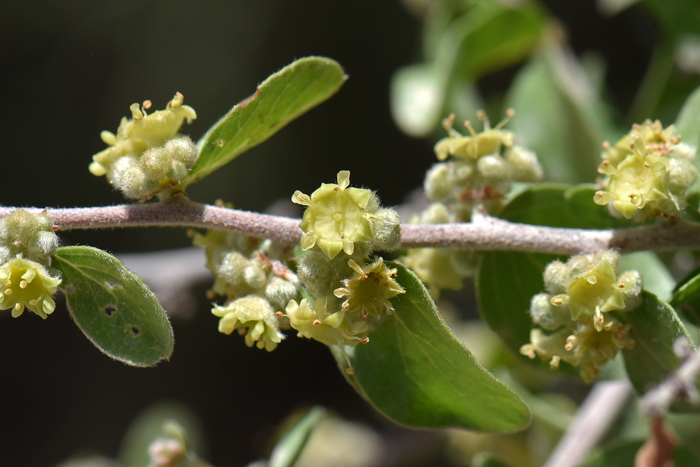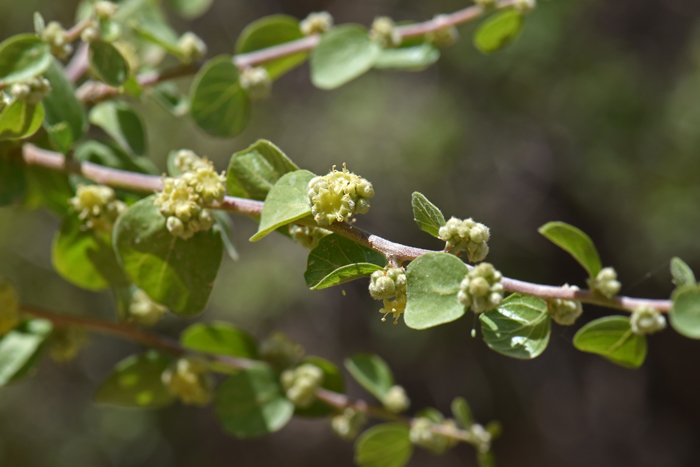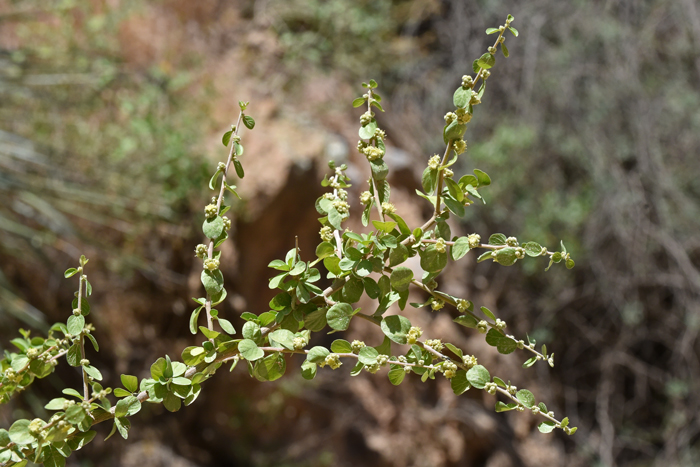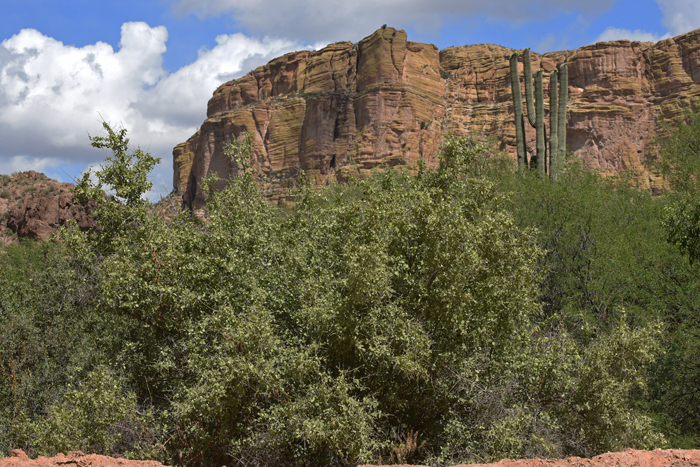Colubrina californica, Las Animas Nakedwood




Scientific Name: Colubrina californica
Common Name: Las Animas Nakedwood
Also Called: California Colubrina, California Snakebush
Family: Rhamnaceae or Buckthorn Family
Synonyms: ()
Status: Native
Duration: Perennial
Size: Up to 10 feet tall but usually much smaller.
Growth Form: Shrub; multiple stems mostly erect to widely spreading; bark reddish-brown, gray to whitish (tomentose) and becoming less so with age; stems weakly armed or not.
Leaves: Green, dull-green to yellowish green; deciduous; alternate; oblong or fascicled; to obovate; silky pubescence; margins entire or with 1 or 2 teeth.
Flower Color: Green; light green, whitish or yellowish; flowers in panicles from axils, solitary or in small fascicles of 3 to 12; flowers inconspicuous; fruit a 3-celled drupe-like capsule, persistent or may drop in 3 to 6 months or so, dark purple to black.
Flowering Season: June to August; April to May in California; flowers again in summer after sufficient rainfall.
Elevation: 1,500 to 3,000 feet; 800 to 3,000 feet in California.
Habitat Preferences: Dry scrub, slopes and along washes.
Recorded Range: Las Animas Nakedwood is relatively rare plant in the southwestern United States where its distribution is limited to southwest Arizona, far southern California and far southeast Nevada. It is also native to Baja California and Mexico.
North America & US County Distribution Map for Colubrina californica.
U.S. Weed Information: No information available.
Invasive/Noxious Weed Information: No information available.
Wetland Indicator: No information available.
Threatened/Endangered Information: No information available.
In the Southwestern United States: Arizona, California and Nevada each have 1 species of Colubrina, New Mexico and Utah have 0 species and Texas has 3 species. All data is approximate and subject to taxonomic changes.
Comments: Las Animas Nakedwood is an interesting species in the Sonoran Desert. It is a rare plant in Arizona with a few scattered locations (Michael J. Plagens 2017). These plants are considered to be "relicts of interest because they they occur in widely separated areas" (Benson and Darrow, 1954).

